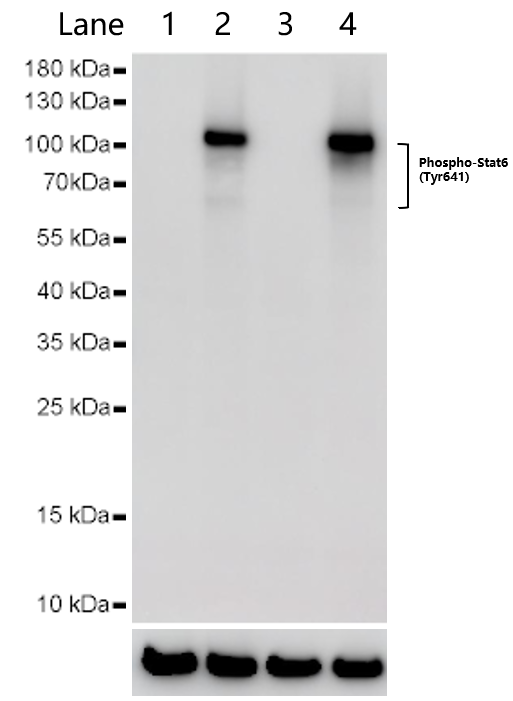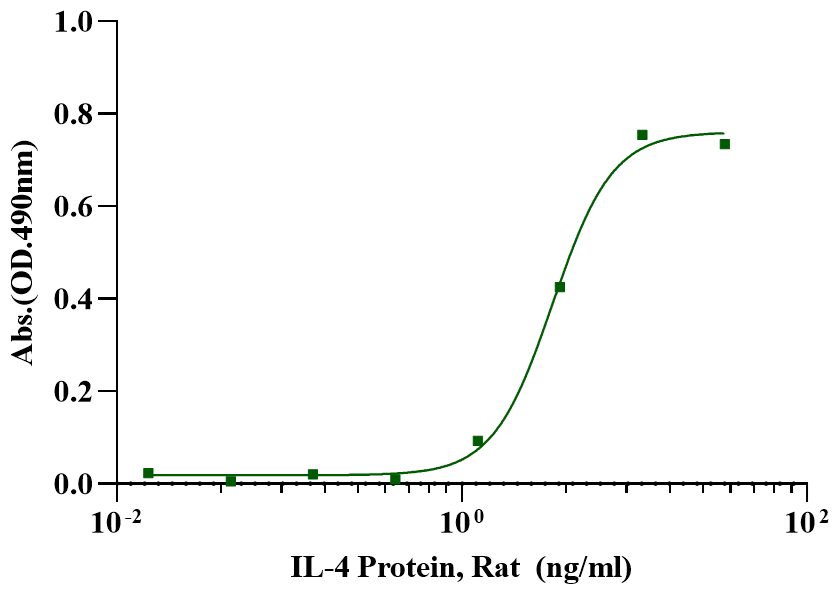Product Specification
| Species |
Rat |
| Synonyms |
Interleukin-4; IL-4; B-cell IGG differentiation factor; B-cell growth factor 1; B-cell stimulatory factor 1 (BSF-1); Lymphocyte stimulatory factor 1; |
| Accession |
P20096 |
| Amino Acid Sequence |
His23-Ser147 |
| Expression System |
HEK293 |
| Molecular Weight |
17-20 kDa (Reducing) |
| Purity |
>95% by SDS-PAGE;
>90% by HPLC |
| Endotoxin |
<0.1EU/μg |
| Conjugation |
Unconjugated |
| Tag |
No Tag |
| Physical Appearance |
Lyophilized Powder |
| Storage Buffer |
PBS, pH7.4 |
| Reconstitution |
Reconstitute at 0.1-1 mg/ml according to the size in ultrapure water after rapid centrifugation. |
| Stability & Storage |
·12 months from date of receipt, lyophilized powder stored at -20 to -80℃.
·3 months, -20 to -80℃ under sterile conditions after reconstitution.
·1 week, 2 to 8℃ under sterile conditions after reconstitution.
·Please avoid repeated freeze-thaw cycles. |
| Reference |
Cytokine. 2015 Sep;75(1):3-7.
J Allergy Clin Immunol. 2022 Aug;150(2):266-276. |
Background
Interleukin-4 (IL-4) is a 13–18 kDa, glycosylated, four-α-helix cytokine that was originally described in the rat as “B-cell stimulatory factor-1”. It is synthesized with a 24-aa signal peptide and, once cleaved, the mature rat protein shares ≈41 %, 43 % and 59 % amino-acid identity with bovine, human and mouse IL-4, respectively; cross-species bio-activity is negligible, making rat-specific reagents essential for in-vivo and ex-vivo work. In the rat, IL-4 is produced chiefly by Th2-polarized CD4⁺ T cells, mast cells, basophils and eosinophils, and signals through two receptor heterodimers: the type-I receptor (IL-4Rα + common γ-chain) found on haematopoietic cells, and the type-II receptor (IL-4Rα + IL-13Rα1) expressed on non-haematopoietic cells and shared with IL-13. Engagement of either complex triggers JAK1/3-STAT6 phosphorylation and, secondarily, the IRS-2/PI3K pathway, leading to characteristic Th2 effector functions: IgE and IgG1 class-switching in B cells, alternative (M2) activation of macrophages, mucus production by airway epithelium, and chemotaxis of eosinophils and mast cells. Consequently, IL-4 is the central driver of allergic airway inflammation in rat models of asthma and is routinely used to skew splenocyte cultures toward a Th2 phenotype in vitro.






